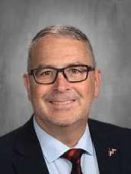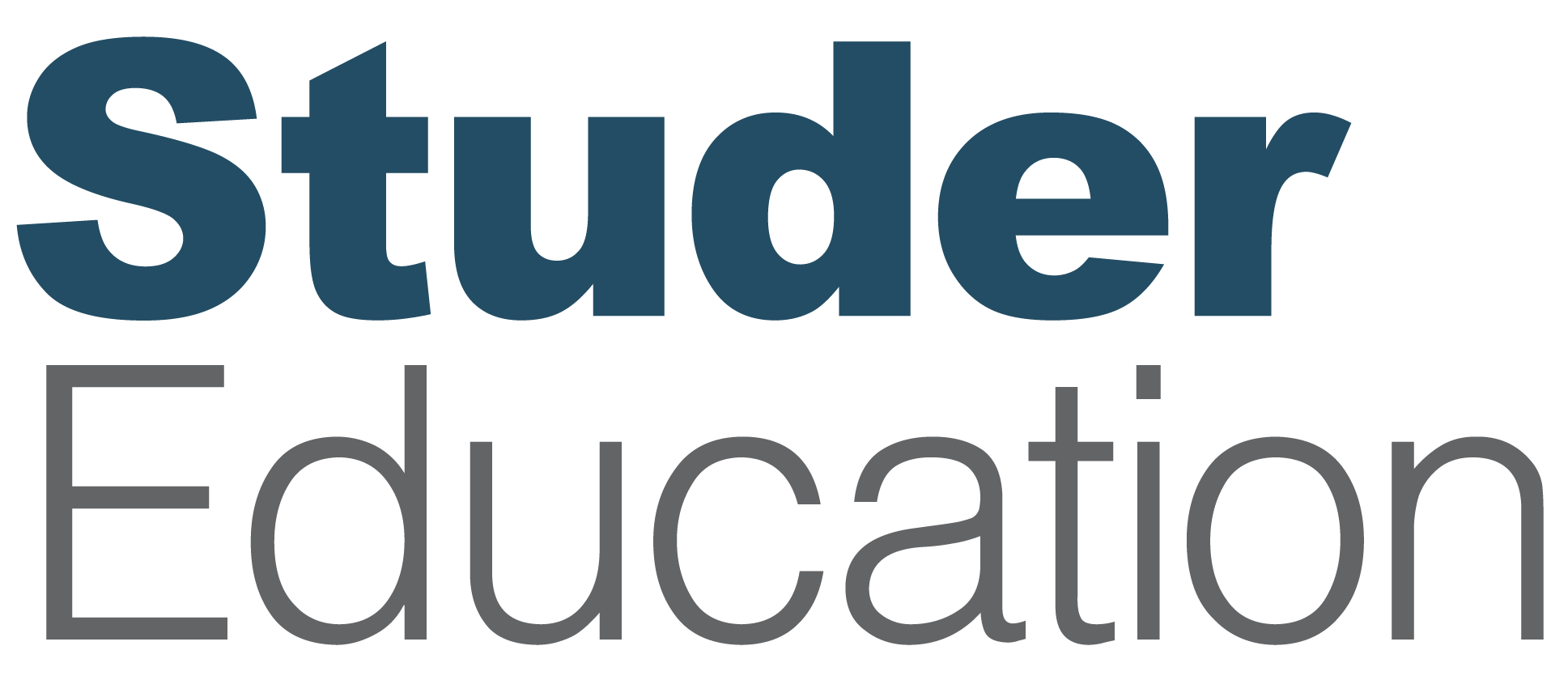
What if two simple practices could significantly improve your district’s culture? Tune in as Superintendent Kevin Case of Douglas School District joins Dr. Janet Pilcher to discuss the impact of intentional rounding and heartfelt recognition. They’ll talk about how leaders going first in these practices creates a ripple effect, building an environment where employees, families, and students feel valued and supported. Learn how these essential tactics can strengthen your district from within.
This episode addresses questions such as:
- What are some tangible results of prioritizing a people-first approach in education?
- How do districts use intentional rounding and recognition to strengthen their culture?
Recommended Resources
DHP K12 Leadership Conference
Our Destination High Performance (DHP) events honor the transformative leaders shaping the future of education. These events highlight how leaders drive continuous improvement, spark innovation, and elevate education through ongoing leadership development and an unwavering commitment to excellence.
Latest Episodes
Kevin Case: Rounding basically makes people feel valued, and we’ve had such great success with that.
[Intro music plays in the background.]
Introduction
Janet Pilcher: Hello everyone, welcome to the Accelerate Your Performance podcast. I’m your host, Dr. Janet Pilcher, founder and president of Studer Education.
Before we dive into the show, I want to personally invite you to go ahead and mark your calendars for July 22nd and 23rd because Studer Education is heading to Chicago. I can’t wait to see you there for Destination High Performance, a very special event created specifically for K-12 leaders. Bring your team and you’ll walk away with tangible tools, proven strategies and renewed inspiration to elevate your impact. This is also a fantastic opportunity to network with other leaders who are deeply engaged in the challenging, yet rewarding work of continuous improvement. To learn more and secure your spot, visit StuderEducation.com/events.
I’m looking forward to sharing this conversation with you today because Douglas School District in South Dakota is taking gratitude and recognition to the next level. In fact, if you’re looking to hardwire gratitude as part of how you operate, Superintendent Kevin Case and his team are a model example.
With over 30 years in education and 22 of those as a superintendent, Kevin brings no shortage of wisdom to our conversation today. As he heads into his fifth year at Douglas, his passion for continuous improvement and big-picture thinking is as strong as ever. As we talk today, you’ll hear firsthand about his focus on building strong team cultures and creating sustainable practices. So let’s get started.
Interview
Janet Pilcher: It’s with great pleasure that I welcome Kevin to our show today. Kevin, welcome.
Kevin Case: Thank you. It’s a pleasure to be here.
Janet Pilcher: Absolutely. So let’s jump in. Just really excited about our talk today and conversation and know that you all have worked on culture building and applying some of our core tactics, which are just essential tactics that we’ll talk about, Kevin, and the work that you’re doing.
The recognition, rounding, and survey rollout will probably be embedded throughout our conversation today. But let’s start a little bit with recognition and the work that you’ve done in the district.
As you know, we’ll be releasing a podcast episode with some of your employees, a principal and a teacher, that share fantastic stories. Wanted to come back and connect to you on the great work that you’re doing by leading the district. So can you tell us a little bit about the strategies you’ve used to implement recognition and what the effect that’s having on your culture?
Kevin Case: Sure. This may sound strange, but I actually am going to start with rounding because I think rounding, what we’ve found is rounding basically makes people feel valued. And we’ve had such great success with that. But we started on our journey with Studer in October. And we kind of started talking about accountability for rounding. And we have 20 leaders that I work with that all participating in the rounding process. And in the beginning, we set an expectation of two roundings per month. We just said everybody will round twice a month. And we had a spreadsheet that we keep track of it. So over eight months, the expectation was everybody rounded 160 times total for our group. And actually, when we got there in May, we had 370.
So we just really did some great things. And I think they got tired of hearing me say, every month I would show them what the data said about who had rounded and who hadn’t. And so we talked a lot about hardwiring. And if we couldn’t hardwire it with us as an administrative group, there’s no way to hardwire some of the other work that we’re trying to do here with our entire staff. So I think what we really found is rounding helped staff to feel valued.
We had a little survey data from some focus groups we had done two or three years ago. And one of the things that came out is people just wanted to feel valued. So I think that was helpful. It allowed us to see trends. It gave us the possibility and the availability of, I guess, fixing simple things. We have the trash can story. I went into my principal’s office one day, and I was like, he had three people in there. And he’s like, “OK, take care of this. Take care of this. Take care of this.” And I was like, “What’s going on?”
And he goes, “Conversations from rounding. I got a teacher who needed a trash can.” And I was like, “are you serious?” And he’s like, “yeah, they didn’t know how to get a trash can. And I fixed the desk one day while I was doing a rounding situation.” So I think people just saying, “oh, they care enough to–I must mean something because they care enough to fix it.”
So anyway, like I said, and we share that data with our administrators twice a month. And then at the end of the year, we did an AI summary of all of the roundings by buildings and just kind of shared with all of our staff, here’s what’s happening as a result of rounding. And here’s the conversations we’re having. So that’s a little bit on that.
Janet Pilcher: Yeah. I mean, that’s great, Kevin. And you know, one thing that you said is really important because when we’re asking people what challenges are they facing or what’s getting in the way of them doing their best work, sometimes people will say, “well, what have they asked for something huge?” And I’m like, “well, they usually don’t. They’re asking for those small things that you can fix pretty quickly that makes a huge impact.” And those are great examples of situations where just didn’t take much, right?
Kevin Case: Correct. It sure didn’t. And then I guess on the recognition side, which is kind of where your question started, kind of try to connect that back to our leadership’s beliefs and strategic direction about, we talk about continuous, one of the things we talk about is continuous improvement every day and trying to get better. How do we get better?
And so, we kind of, again, I’m back to measuring what we’re doing. So we didn’t require people to, I guess, keep track of thank you notes. But about half my administrators did. And so the average was about 58 thank you notes over the last year, actually, from October when we started keeping track. And ironically, our food service director, she sent over 70 thank you notes.
And what we’re really seeing, a huge impact on our food service program in terms of retention and just how that group of individuals interacts with kids and how they interact in our buildings. And so Jen has done. Jennifer Garner’s done a great job of just really embracing this. And she has stories in her monthly newsletter. And we have a food service–they have values and beliefs also. And our tagline is “fueling student success one meal at a time.” They came up with that, which I thought was really cool.
So it’s just fun to watch people embrace the work and how it impacts others. So I think that’s good. I go back to rounding. And I think the other thing that rounding did is I call them second hand compliments. You know, you ask that question at the end, “who’s been especially helpful?” And so I think sending a note to people just saying, “hey, I was talking with Jeannie the other day, and she indicated you’ve been such a great leader helping us move forward some of our strategic initiatives. And she really appreciates you. Thank you for being a part of our team.” That kind of conversation.
Our end of year celebration, we put out 800 blank thank you notes on cards at the tables, two per person. I asked them just to write the name of a student and/or an adult on each one and take them with them. So I think that’s been very beneficial.
We start every admin meeting with a kind of a thank you screen up and we have thank you notes on all the tables for our admin meetings. And I think that helps.
And then the other thing we’ve really embraced this year, something called Above and Beyond. And we take nominations for that. And that can be from colleagues or parents or students. And again, we go back, every time, we go into classrooms and hand those out. So we read them and and really talk about the why, we talk about you said this was important. You said you wanted to be recognized for the good work you do.
And then we started, and I started talking with students and saying students can do these two. And we really had an uptick in those. We had over 111 of those this year. So those are just some strategies we’ve used.
Janet Pilcher: Oh, so good, Kevin. I mean, and their intentional strategies, right? Intentional strategies that you use to develop your leaders. So let’s talk about that. Casey, when we were talking with Casey, she talked about your strong commitment to developing leaders and leadership development. So, you know, what is that? How have you intentionally are building and strengthening your leaders in your district?
Kevin Case: Thank you. We really started when I got here, we had an influx of obviously the ESSR dollars, and one of the things I noticed was our culture was just not what it needed to be. And we were very siloed in terms of how we operated. Actually, teachers say “you talk differently. The way you talk is different. We’re not used to the conversation and how you have it with us.” Because I believe all stakeholders should have a voice. I’ve had a very diverse and background in Adaptive Schools. And so that’s some of the work we really started with just training staff.
So we trained over 250 staff with four days of training in Adaptive Schools. And it has really made an impact on, I think, making people feel valued. Last year, well, a year before last, we started in some work with change. Really felt like our initiatives were not being successful. And I felt like it was a lack of understanding of the change process.
And I think the thing that I really had a lot of ahas with and as did our leadership staff was Michael Fullan’s work on coherence. Just those four factors that need to be present for change to take place. But not, we always went to accountability. And I always feel like, OK, it’s, accountability is one of the four, but we have to have a vision. People have to know where we’re going. We have to do training. We have to make sure people have that knowledge base. And then also we have to collaborate.
So, and collaboration is one of our beliefs that we think is important. So we really spent some time there. And then really we partnered with Studer at the beginning of last year. And that’s one of the best things we have done as an organization. And it’s really tied things together. And the timing was perfect. Had we have done it a year earlier, I don’t think it would have been as successful. But we had done a lot of background work.
And again, going from those random acts of improvement to really what are, how do we align those so the arrow, everyone knows the arrow graphic. They’ve seen it on numerous times. So we try to talk about that a lot.
So this summer, I think one of the key things we did and working with Casey is our buildings all do building improvement plans for the next year. And they’ve always, principals have always done them on their own. This year, when Casey came in late May, we spent time and we had 70 people at that planning session. So each building brought a team. And then we also had a couple of central office teams and we also had every department. So maintenance, transportation, food, service and technology had a team there too. To really start to work on how do we get better and saying you, all your voices are important to the work we’re doing.
And then I had a little extra money and we were able to do an aspiring leader summit, and we had another 50 people at it the day after we did the other training. So we really hit people hard. And what we talked with that group about is, we introduced PDSAs to a larger group. And then we also gave them the opportunity to start to say, what is it you want to get better at next year? It can be small. It can be classroom. It can be a group of people working together. So, and then we’re going to be able to provide some ongoing support for those people virtually for the next six months.
And the last thing I think probably an important piece is we promoted four people internally this year. So we moved, everybody we hired administrative role this year, we internally promoted. We didn’t even open those positions up. Four years ago when I got here, we had no one to put in those positions. So I think that speaks a lot for the work we’ve been doing.
Janet Pilcher: Yeah, it does, Kevin. That’s your evidence, right? First of all, I mean, very intentional. You know, the, it’s not hit or miss for you in terms of what I’m hearing. I mean, you’re very strategic and intentional and methodical about the approach. And Casey is that way in general.
And so, you know what, so payoff is that you’re looking at a pipeline you didn’t have to one that now you’ve developed people to move into those roles. And that’s a, that’s a huge accomplishment because that’s what we’re all trying to get to is developing our people so that they can assume those leadership positions in ways that continue to build and strengthen the culture that we’re in. So really nice work with the combination of development opportunities.
Kevin Case: Thank you.
Janet Pilcher: And just thinking a little bit, taking that a little bit to the support services survey. So, you know, gone to, we’ve provided service to family, we’ve had service excellence training. And now you’ve administered the survey that gives your employees an opportunity or people on your team opportunity to give feedback to the service that you’re providing internally to your teams. And you did the rollout process. So talk a little bit about your experience in there and what emerged and what were your takeaways.
Kevin Case: So again, under Casey’s guidance, we, I think there’s PTSD around climate surveys or any kind of surveys. I think people, people are like, “Oh my gosh, I remember five years ago, we did that and blah, blah, blah.” And I think we had a lot of that. So I think having Casey lead us through that was huge. And again, Casey said “leaders go first.” So that’s what we told our people, we’re going to go first before we do our parent survey. And I think it was a really good process.
And again, we didn’t leave it to chance. We simply said, “we have a meeting today, we’re all meeting and the first 20 minutes of the meeting is a survey. Everyone will do the survey.” I talked to them a little bit about just, this isn’t about you saying good things about us. We really want honest feedback. And I think that’s one of the things Casey told us from the survey, she said, “I was really impressed with the nature of the feedback that you received.”
She said, your people, you know, from what she could tell, our people were honest. And, and I felt that way, I felt good about, you know, the area that they said continue doing, which was kind of that attitude. “Was it a nice experience? Did you receive service with a smile?” Basically, they said, “we feel like you’re here for us.”
Some of the things that came out that were interesting was they appreciated the fact that we don’t judge. We’re there to answer questions. And we’ve talked a lot about that. We talk a lot about curiosity. If you listen to our team, it’s funny to hear we use “curious” a lot. “I’m curious. I would like to know more about that.”
And at first, it was really awkward. And again, that’s part of that Adaptive Schools training too, that I think that I brought with me. So it’s been a natural, I think one of the things I’m good at is asking good questions. But I think it’s one of the things our team has gotten much better about.
So they also said, “we appreciate the fact that you don’t jump right into problem solving. You actually help us walk through that process, guide and assist us.” And I think the big thing we heard this year is just more visibility. And I think we’ve talked a lot about just being out and about more and being intentional about when we’re out and about. Our campus is unique. We have 2,800 students, five buildings, and we’re in a two block radius. So I can walk all of our buildings in 45 minutes in the morning, say “hi” to people.
So our area growth on the survey with systems and operations, which was no surprise to me. We have been a district of 2,800 operating on a philosophy that we’re a district of 500. So our systems and operations is in need of getting better. And we’ve known that. So we spent a lot of time having conversation about that.
But the thing that really came out that we’re really working through right now is the pause button, if you will, is what I call it. So, and I knew it was an issue. I’d get frustrated. I’d be like, Principal A call, and they’d call and they’d say, hey, this is going on. It’s a personnel issue. So then Anne would come talk to me about it. In the meantime, Principal A would call Tim and say, “I’ve got this personnel issue, blah, blah, blah.” So then Anne and Tim would come talk to me, or Anne. And then, and I was like, it’s like the telephone game.
And so really what we came up with is principals need to better understand our roles and who they call for what. But more importantly, our ability on our end to hit the pause button and say, “hey, hold on just a minute.” So what we kind of agreed to is when one of those comes in, we start to hear the problem and we say, “hey, I’m going to hit the pause button. I think I got the gist of what’s going on here. I believe these three people need to be involved in us solving this problem. We’re going to get everybody together. We’re going to have a quick conversation. That way we don’t have to spread it through everybody.” And that has been, we’re not perfect at it by any means, but we are getting better at it. So I think that’s been, I think that’s been helpful.
The second thing we’re working on is a very detailed calendar that we’ve been working on for two years, but better getting a review of systems in place before we use them. So in other words, what’s the hiring process in the spring, really going through that process again. We just updated our whole hiring process. And Tim’s been instrumental in doing that, but it’s been successful because he started with a couple small PDSAs to start to say, “hey, I’m going to work with one principal. We’re going to see if this works or not. What feedback do you have?” And then we rolled it out to everyone. Doesn’t mean to say the end rollout was perfect. It just means it was a lot better than it could have been. So it’s been fun to watch that and to watch our team grow.
Janet Pilcher: Yeah. And it’s just so much engagement from multiple leaders and people, Kevin, really getting in and solving the problem. You’re not having to solve that for them, but they’re getting, getting right in there and having those conversations. And as we say, people closest to the work are usually the best people to solve the problems instead of us.
As I’m looking at what you’ve done in a very short period of time, you’ve done a lot. I mean, you all have really done great work in a short period of time. And as we close today, if you’re looking back over the past year and then looking at how you set the stage for next year, what are your reflective thoughts as a leader as you end this year saying, “I’m really proud of where we are. I’m proud of what we’ve done and it sets the stage for our future.”
Kevin Case: I think the key takeaway has to do with rounding. And I think even principals, I took a group of principals to DHP in Denver last year and we were just getting into it. And they started hearing about the impact rounding had in other districts. So I think the impact rounding can have is huge, and I had no idea.
And we actually did, our executive leadership team did, we didn’t get done with everyone, but we did about a fourth of our administrative team. We did group rounding at the end of the year with them to talk about a reflection on what the year–we added a couple more questions. But it was huge. There’s some things that happened in those conversations that were like, “wow, let’s fix this.” There was something with our capital outlay process. We just were we dove in the next day and started fixing it because it just made sense to fix it based on the conversations we had.
So I think that the other reflection would be there is a visible difference in our district in terms of how people treat each other after just one year with the recognition and the work we’ve been doing. So it’s fun just to see the comments people make, the feedback you get from, like I get feedback every time I send a thank you note, not every time, but more often than not, I will get a thank you email about the note I sent. I’m like, “you really don’t need to do that, but that was greatly appreciated.”
Walking around the district and seeing thank you notes has been huge. And I think just seeing our kids start to get involved because that was one of the things that was one of the things our parents said in their survey, the number one thing, and this was across the board district wide and in every building is they want to hear more good things about their students. And I’m like, that makes perfect sense. That’s what our staff wanted.
So that was some of the time we spent at the end of the year. Every group had to work on what are they going to do to better provide positive feedback to parents and even central office staff, even custodial maintenance staff, we talk, everybody, it’s part of what you do. You’ve got to figure out some ideas, and we planted a few ideas and some of them liked them and some of them didn’t, some of them came up better. But I think that was huge.
As far as next year, we’re really excited. Our high school, well, our district, I say our high school, I think it falls more in high school, but we’ve not done any portrait of a graduate work. We’ve not really had any conversations. We’ve looked at our national student clearinghouse data and it’s not really positive in terms of, you know, the success rate we’re having with kids moving on to post-secondary. And I’m not talking about four year, I’m just talking in general.
And so I think the portrait of a graduate and engaging our parents in a deeper conversation and our staff about what do we want for our kids. South Dakota has some incredible things going on. Dakota Dreams Scholarship, which is basically, if you commit two years to South Dakota, they’ll pay for two years of education for you. Our kids are not taking advantage of it. And we live 12 miles from a two year school that is extremely resourceful.
So I think looking at that, and I may or may not use it proper term, but I think some pillars of excellence, we’ve looked at some of the work when we’ve been over at Tea and working with them and learning from them. The pillars of excellence just really trying to narrow in our recognition levels and kind of, we like what our kids are doing, but we want them to go deeper when they recognize people. We like what parents and staff are doing, but how do we align that better with what we believe in and what’s important?
So those are two things I think that are really exciting for where we’re headed and then kind of dialing in our scorecard more. And I’m looking forward to our staff survey. Because of the rounding we were doing and just internal bandwidth, we didn’t feel like we could do the staff survey this year. So we did parent and we did the parent/caregiver and the student one. But we’re looking at September, October to do a staff survey. So I’m looking forward to those results and what they bring to us. So it’ll be exciting.
Janet Pilcher: That’s so good. And Kevin, I did, you know, as you were talking, I remember our connection in Colorado and Denver, the Denver area last year. And so I remember that well. S,o so glad that you joined in our network.
And I’m so glad that, I mean, just the work that you’re doing again, just so much work, very methodical, very intentional with your leadership. So thank you so much for what you’re doing and your leadership and thank you for your partnership.
Kevin Case: Well, thank you. Well, it’s been a blessing to have Studer as one of our strategic partners. And again, Casey has been truly a blessing to us.
Janet Pilcher: Thank you.
Conclusion
[Outro music plays in the background.]
Janet Pilcher: When I asked Kevin about their gratitude efforts, he started with rounding. And that’s no accident. When we genuinely get to know our people and what’s important to them, we can ensure our gratitude is indeed timely, specific, and sincere.It’s all about that intentional effort.
Thank you, Kevin, for supporting the people in your district. Can’t wait to see where you all land as you continue to hardwire these practices and deepen your culture of excellence. You and your leadership team are truly living out what it means for leaders to go first.
If you’d like to hear more about the specifics of the recognition program in Douglas School District, make sure to keep tuning in every week. In an upcoming episode, I’ll interview a teacher and principal about how this intentional gratitude effort has impacted them and their culture.
As always, thank you for tuning in to this episode of the Accelerate Your Performance Podcast. I look forward to seeing you next week as we continue to work together to achieve organizational excellence. Have a great week, everyone.
Featured Guest

Kevin Case
Superintendent • Douglas School District, SD
-
Janet Pilcher President








